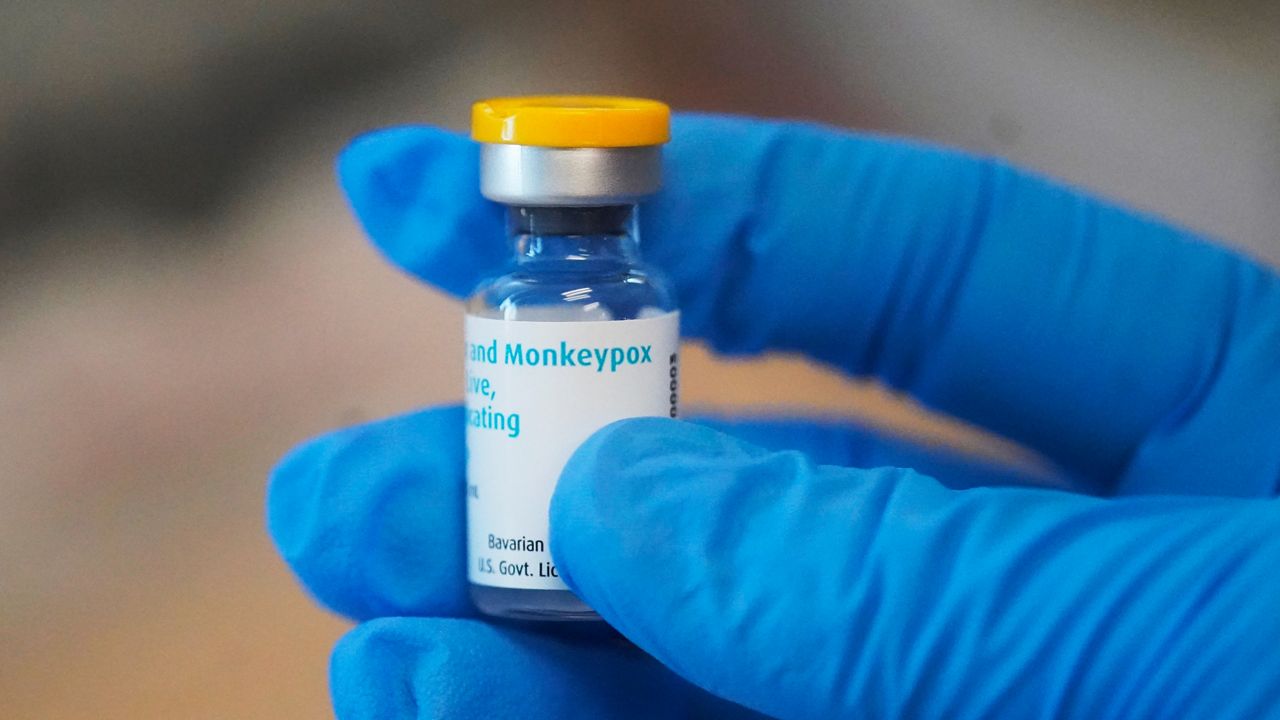OHIO — While the number of monkeypox cases remains low in Ohio compared to the rest of the nation, Ohio Department of Health Director Dr. Bruce Vanderhoff urged residents during a press briefing Thursday to take preventative measures to slow the spread.
As of Wednesday afternoon, the U.S. confirmed 10,392 cases of monkeypox, according to the Centers for Disease Control and Prevention. Of them, 75 of those cases have been in Ohio. The first confirmed case in Ohio was reported on June 13, 2022, Vanderhoff said.
Vanderhoff said the risk of monkeypox contraction is low in Ohio compared to other states, such as New York and California, which have more than 700 reported cases.
While the risk is low, Vanderhoff stressed contracting the virus and enhancing the spread is entirely possible.
"It’s important to recognize anyone can be infected with monkeypox if they have close contact with someone who has monkeypox," Vanderhoff said.
He also acknowledged the frustration surrounding the lack of availability of the Jynneos monkeypox, but he said he expects the state to receive more doses in the future.
"The supply is limited worldwide," Vanderhoff said, which is why federal authorities are sending most of the doses to the hardest-hit areas or high-risk populations.
Last week, Ohio received nearly 5,000 vaccines, according to Cleveland Department of Public Health Director Dr. David Margolius. Cuyahoga County received 1,200 doses, Hamilton County got 350 and Franklin County received 850. The vaccine is only being administered to high-risk populations currently.
This week, Vanderhoff said the state expects 5,440 more doses. Eventually, he said the number of doses will increase, but as Ohio continues to have low spread, it's not on the high-priority list for vaccine allocation. Vanderhoff also said the latest emergency use authorization designation from federal authorities will help spread out the doses.
The Biden administration declared monkeypox a public health emergency earlier this month in an effort to slow the growing outbreak. The emergency use authorization allows health providers to administer just 0.1ml of the Jynneos monkeypox vaccine intradermally — between layers of the skin — instead of injecting 0.5ml of the vaccine subcutaneously — under the skin — allowing for five doses of the shot in a single vial.
CDC Director Dr. Rochelle Walensky said that under the new plan, the 441,000 vaccine doses in the federal stockpile could stretch to 2.2 million. White House monkeypox coordinator Bob Fenton said at the briefing that the 150,000 doses of the vaccine set to arrive in September could be as many as 750,000 — which, with two vaccine doses per person, could vaccinate roughly 365,000 people.
As the virus continues to spread, Vanderhoff encouraged Ohioans to take preventative measures. It's transmitted person to person through direct skin-to-skin contact, having contact with an infectious rash, through body fluids, through respiratory secretions, or by inhaling large respiratory droplets or through close contact with body fluids and lesions, as well as bedding and other contaminated materials, according to the CDC.
As of right now, the highest areas at risk are Ohio's metropolitan cities — Cleveland, Cincinnati and Columbus, Vanderhoff said.
Symptoms include:
- Fever
- Headache
- Muscle aches and backache
- Swollen lymph nodes
- Chills
- Exhaustion
- A rash that can look like pimples or blisters that appears on the face, inside the mouth and on other parts of the body, such as the hands, feet, chest, genitals or anus
- The rash goes through different stages before healing completely. The illness typically lasts between two to four weeks
The CDC recommended anyone who has a rash that resembles monkeypox speak to their health care provider.
Spectrum News' Justin Tasolides contributed to this report.



